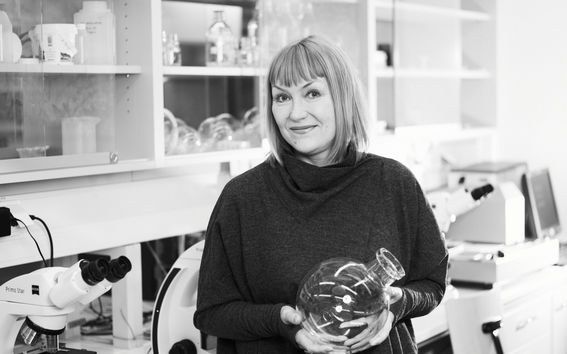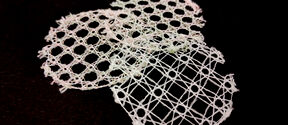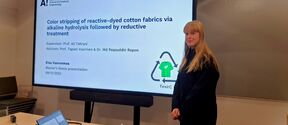Finland Prizes awarded to professor, designer Pirjo Kääriäinen and alumna, artist and activist Marja Helander

Among this year’s prize recipients were Professor of Practice of Design driven fibre innovation Pirjo Kääriäinen and Aalto ARTS alumna, photographer, filmmaker and activist Marja Helander.
Pirjo Kääriäinen has been facilitating interdisciplinary CHEMARTS collaboration between the School of Arts, Design and Architecture and the School of Chemical Engineering since 2011. CHEMARTS aims at inspiring students and researchers to explore biomaterials together, and to create new concepts for the future use of plant-based materials. There are several ongoing research projects on bio-based materials, where the team explores design driven technology development processes in materials research, and creates future oriented concepts, applications and business seeds for the more sustainable world of materials.
Marja Helanderis a Sami photographic and video artist who has, in her works, discussed her identity between the Sami and the Finnish cultures. Helander has focused on examining the conflict between the traditional Sami way of life and modern society as well as photographing the bleak post-colonial landscapes in the Sápmi region. It is important for the artist to strike a balance between being political and leaving room for interpretation. Helander’s short film Eatnanvuloš lottit (Birds in the Earth) won a major Finnish film award, the Risto Jarva Prize, in 2018. Recently Helander curated the Mänttä Art Festival 2019 exhibition.
Read more news

Learning Centre opening hours during Christmas and year-end holidays
Thank you for the past year and have a wonderful holiday season!
Smart textiles are reshaping our understanding of materials – and interspecies communication
The PAST-A-BOT research project, funded by the European Research Council (ERC), is developing soft, intelligent textiles that could one day function as rescue robots, sound-sensing agricultural fabrics, or assistive clothing. At the same time, the project aims to rethink the way we approach materials research.
Master’s student showcases efficient color stripping of cotton fabrics
On December 9, master’s thesis student Elsa Vuorenmaa from the Textile Chemistry Group presented the results of her research on color stripping of reactive-dyed cotton fabrics.






